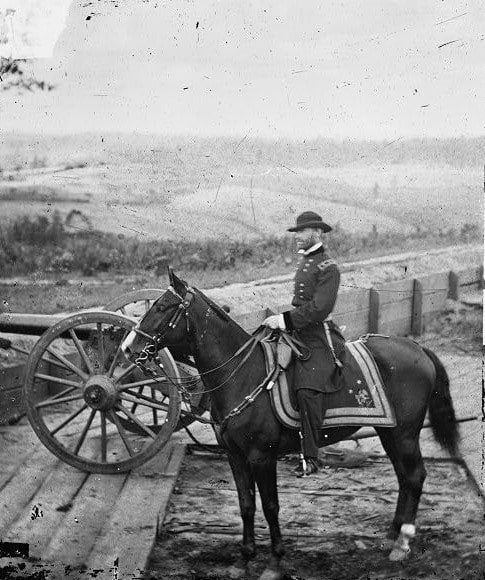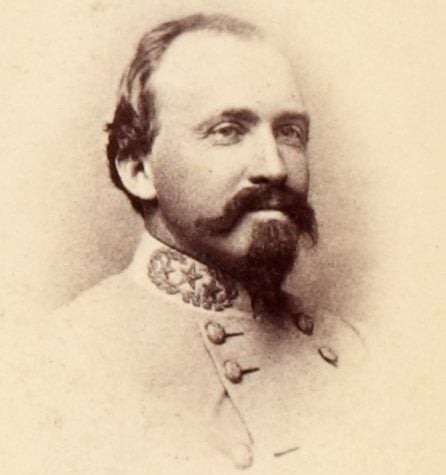
Sherman Outside Atlanta 1864
Sherman was confident of a quick and easy victory. He had forced General Hood back, at the Battle of Kolb’s Farm north of Atlanta.
The Union General was only a couple of dozen miles from Atlanta, sure that the Rebels were now stretched too thin to resist him.
At eight in the morning 27 June 1864, the Union attack began. Troops charged forward to storm the Rebel trenches.
Within 90 minutes it was evident that the assault had failed.
Sherman had miscalculated. The Confederates were dug in at Kennesaw Mountain, with fortifications that blunted everything the Yankees could throw at them. You can see the mountain and some of the earthworks below, in a photo taken not long after the fight.

The Federals lost 3 men for every Confederate loss. Sherman said it was “the hardest fight of the campaign up to that date.”
His frontal assault failed. It was a bloody lesson for Sherman. The Rebels were far from a defeated rabble that he could run over.
When Sherman got to Atlanta, he took a different tactic. The scoundrel didn’t want another black eye from a direct assault, so he had his artillery begin a bombardment that lasted for months.
Confederate army positions were forward of the city itself. Sherman targeted them, but he also rained fire on the populace and their homes – civilians well behind the military fortifications.
 While negotiating the treatment of civilians in Atlanta, Hood wrote to Sherman:
While negotiating the treatment of civilians in Atlanta, Hood wrote to Sherman:
“…there are a hundred thousand witnesses that you fired into the habitations of women and children for weeks, firing far above and miles beyond my line of defense.”
General Hood knew the horrors of battle, having lost a leg and the use of one arm already. But now his enemy was taking the battle to women and children.
Hood knew evil when he saw it. Sherman slashed and burned his way through Georgia, then moved on to South Carolina where he burned a couple of dozen towns.




More Stories
General Dwight D. Eisenhower’s Reflection on Robert E. Lee
Sad Woke Charlottesville liberals Melt down infamous statue of Robert E Lee
NC Appeals Court rules for Town of Louisburg in removal of Confederate monument